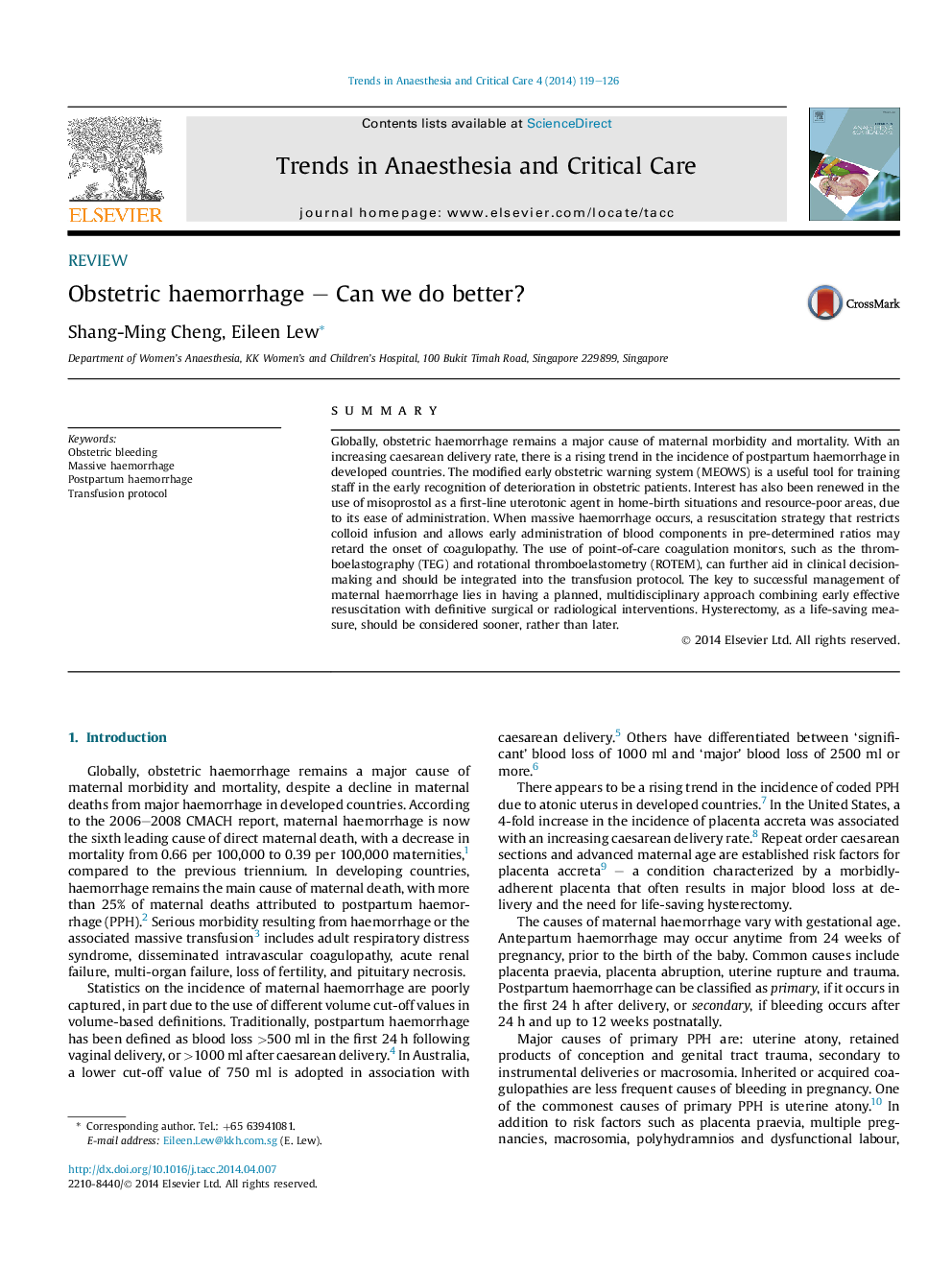| Article ID | Journal | Published Year | Pages | File Type |
|---|---|---|---|---|
| 2772653 | Trends in Anaesthesia and Critical Care | 2014 | 8 Pages |
SummaryGlobally, obstetric haemorrhage remains a major cause of maternal morbidity and mortality. With an increasing caesarean delivery rate, there is a rising trend in the incidence of postpartum haemorrhage in developed countries. The modified early obstetric warning system (MEOWS) is a useful tool for training staff in the early recognition of deterioration in obstetric patients. Interest has also been renewed in the use of misoprostol as a first-line uterotonic agent in home-birth situations and resource-poor areas, due to its ease of administration. When massive haemorrhage occurs, a resuscitation strategy that restricts colloid infusion and allows early administration of blood components in pre-determined ratios may retard the onset of coagulopathy. The use of point-of-care coagulation monitors, such as the thromboelastography (TEG) and rotational thromboelastometry (ROTEM), can further aid in clinical decision-making and should be integrated into the transfusion protocol. The key to successful management of maternal haemorrhage lies in having a planned, multidisciplinary approach combining early effective resuscitation with definitive surgical or radiological interventions. Hysterectomy, as a life-saving measure, should be considered sooner, rather than later.
